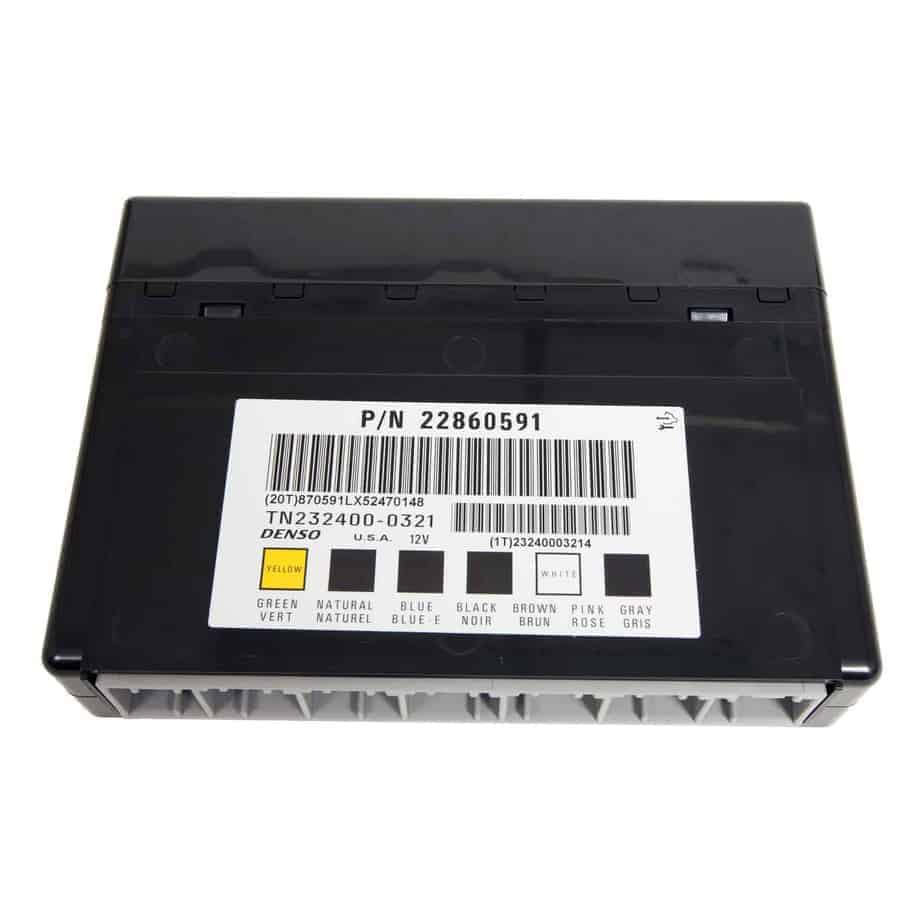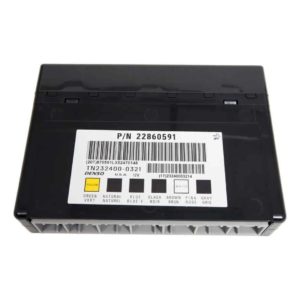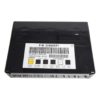Restore Full Functionality to Your GM Vehicle
Are you battling bizarre electrical issues in your Cadillac, Chevy, or GMC? Flickering lights, malfunctioning power windows, a security system with a mind of its own, or even a no-start condition can often be traced back to a single culprit: a failing Body Control Module (BCM). As the central command for your vehicle’s comfort and convenience features, when the BCM goes down, it can cause a cascade of frustrating problems. This isn’t just an inconvenience; it can affect vehicle security and safety systems. This is a direct-fit replacement solution, specifically for vehicles like the 2010 STS Body Control Module, designed to restore order and reliability.
The biggest hurdle in replacing a BCM has always been the expensive and time-consuming trip to the dealership for programming. We eliminate that step entirely. When you purchase this module, you simply provide us with your vehicle’s VIN. Our certified technicians will then flash the BCM with the latest, most stable software directly from GM, ensuring it’s ready for installation the moment it arrives at your door. This saves you time, money, and the headache of coordinating with a service center.
Case Study: A Tricky Diagnosis
A customer’s 2010 Cadillac STS came into the shop last month with a laundry list of complaints: the radio would turn on and off randomly, the driver’s side window wouldn’t go down, and the key fob only worked intermittently. They had already replaced the battery and checked all the fuses. After connecting my scan tool, I noticed a slew of communication errors pointing towards the BCM. Instead of a costly diagnostic path, we confirmed the BCM was the fault. By providing them with a VIN-programmed unit like this one, they were able to perform the final installation themselves, saving hundreds on dealer labor and programming fees. It’s a prime example of how the right part, prepared correctly, can turn a complex electrical nightmare into a manageable weekend repair.
Is Your Vehicle Showing These Symptoms?
- ✔ Erratic or non-functional interior and exterior lights.
- ✔ Power windows, locks, or mirrors working intermittently or not at all.
- ✔ The security system or horn activating without reason.
- ✔ Key fobs failing to lock or unlock the doors.
- ✔ The vehicle failing to start, even with a good battery and starter.
- ✔ Multiple unrelated warning lights on the dashboard.
A Straightforward Guide to BCM Installation
Replacing your 2010 STS Body Control Module is a manageable task for a confident DIYer. While the exact location varies by model (see fitment list), the process is generally similar. Always consult a service manual for your specific vehicle.
- Safety First: Disconnect the negative terminal from your vehicle’s battery to prevent electrical shorts.
- Locate the BCM: On the 2010 STS, it’s typically located in the center dash area. For other models, it may be under the steering column or behind a kick panel.
- Disconnect and Remove: Carefully unplug the wiring harness connectors. They have locking tabs that must be depressed. Once disconnected, unbolt or unclip the old BCM and remove it.
- Install the New Module: Mount your new, pre-programmed BCM in the same location. Reconnect all wiring harnesses, ensuring each plug clicks securely into place.
- Reconnect Battery: Re-attach the negative battery terminal.
- CRITICAL Post-Install Procedures: After installation, certain systems must be re-synced. Using a capable diagnostic scan tool, perform the ‘Setup SDM Primary Key in BCM’ procedure to clear any airbag faults. Some vehicles may also require a Brake Pedal Position Sensor recalibration. Failure to perform these steps can leave warning lights on and compromise system functionality.
Verified Fitment for Your GM Vehicle
This BCM is a direct replacement for a wide array of General Motors vehicles. Please verify your part number or match your vehicle from the list below. This unit replaces part numbers: 10382479, 15093910, 15276271, 15299986, 15819552, 15828601, 15837419, 15872388, 15872421, 15880684, 15921352, 15921353, 15948438, 15948439, 20815898, 20839063, 20864767, 20864768, 20921435, 20921436, 20935349, 22860591, 25826124, 25826125, 25847588, 25847589, 25892622, 25910474, 25934762, 25934763, 95151084.
Acadia (07-12), Avalanche 1500 (10), Caprice (11-13), Captiva Sport (12), CTS (08-13), DTS (06-11), Enclave (08-12), Equinox (07-09), Escalade/ESV/EXT (10), Express/Savana Vans (08-12), G8 (08-09), Hummer H2 (08-09), Impala (06-13), Lucerne (06-11), Monte Carlo (06-07), Outlook (07-10), SRX (07-09), STS (10), Suburban 1500 (10), Tahoe (10), Torrent (07-09), Traverse (09-12), Vue (08-10), Yukon/Yukon XL 1500 (10).
Note: Specific options or IDs may apply. Please check the original description for details.
Frequently Asked Questions
What exactly does a Body Control Module do?
The BCM is a computer that acts as the central hub for your vehicle’s body electronics. It controls non-engine related functions like power windows, locks, lights, wipers, security system, and climate controls.
Why do you need my VIN number?
Your Vehicle Identification Number (VIN) allows us to program the BCM with the specific software and settings for your car’s exact configuration. This ensures all features work correctly and makes the installation process much simpler for you.
Is this a difficult part to install myself?
For someone with basic mechanical skills and tools, it’s generally a straightforward job. The most important part is locating the module and being careful with the plastic trim and electrical connectors. The post-installation recalibration may require a higher-end scan tool.
What tools will I need for the installation?
Typically, you’ll need a basic socket set, screwdrivers, and possibly some trim removal tools to access the BCM without damaging interior panels. A diagnostic scan tool is required for the post-installation procedures.
Will this part require any additional programming after installation?
No, the core programming is done by us before shipping. However, you will need to perform relearn or setup procedures for certain integrated systems, like the airbag (SDM) and potentially the brake pedal position sensor, using a scan tool.


